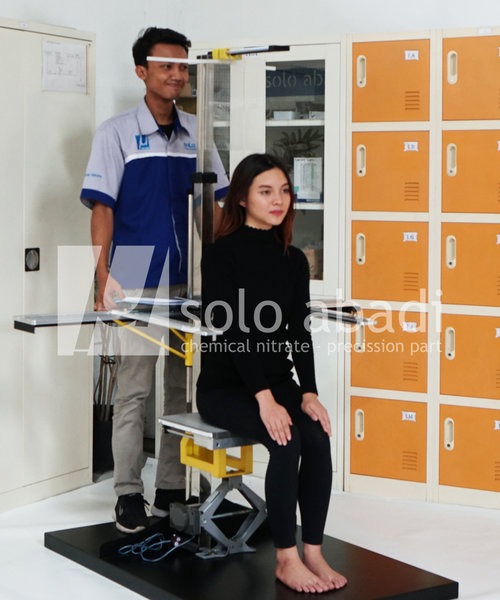3 Domains of ergonomics are Physical Ergonomics, Cognitive Ergonomics, and Organizational Ergonomics. These types of ergonomics are also known as the primary domains in ergonomics. To understand how these fundamental principles are applied, check out the following information!
What is Ergonomic?
Ergonomics, commonly known as Human Factors, actively studies the interaction between humans and machines/systems. To establish their relationship, ergonomics utilizes theories, principles, and data. Humans take center stage in ergonomics. Considering human physical limitations, tools and environments are actively designed to facilitate tasks.
The 3 Domains of Ergonomics
According to the International Ergonomics Association, three fundamental types of ergonomics actively serve as the basis for various other disciplines. These are Physical Ergonomics, Cognitive Ergonomics, and Organizational Ergonomics.
1. Physical Ergonomics
Studies the relationship between humans and the physical elements in their environment, such as tools and workspaces. It encompasses disciplines like anthropometry, physiology, and biomechanics. The goal is to design workspaces and tools that suit the dimensions and physical capabilities of the individuals using them. It’s important to note that different populations have varying body dimensions based on their ethnicity, thus requiring anthropometric measurements specific to each population.
The Usage of Physical Ergonomics
Physical Ergonomics is utilized to design work areas such as computer desks or workspaces in industries. Its goal is to reduce workload and prevent workplace accidents. Especially in manufacturing industries, physical ergonomics needs attention due to physical or chemical hazards that can threaten workers.
Therefore, anthropometric measurements of workers need to be conducted to support their safety. For example, ensuring that the height of machines and conveyors adjusts to the average height of workers, designing aids to lift heavy loads.
How to Measure Physical Ergonomic?
The Anthropometric Chair actively serves as one of the mandatory instruments in Ergonomics and Work System Laboratories. As the name suggests, the Anthropometric Chair is actively designed to determine human body dimensions for application in products, especially chairs. However, the Anthropometric Chair from PT Solo Abadi Indonesia can actively measure human dimensions in a standing position and even ratios on the face.
The Anthropometric Chair is actively the most familiar ergonomic measurement tool in the field of ergonomics. Initially, researchers actively used Anthropometric Chairs made of wood and reading tape, and could only actively measure in a sitting position. By actively using the Anthropometric Chair, ongoing Ergonomic Research, currently actively promoted by the National Research and Innovation Agency (BRIN), can be fully supported. This is because BRIN is actively projected to release Indonesian National Standards (SNI), especially for chairs in educational institutions.
So far, the Anthropometric Chair is actively the most widely used instrument in educational institutions in Indonesia, especially in Industrial Engineering study programs. In addition, the application of Anthropometric Chair data is also actively carried out by the Sport Authority India (SAI) in Sport Science.
Portable Anthropometry With 4 Types of Caliper
Portable Anthropometry, 4 Types of Calipers in One Tool, actively provides all types of calipers or measurement tools. This instrument can actively measure more than 100 body measurement dimensions. This anthropometric data can actively be easily applied in various disciplines.
The Portable Anthropometry Complete Set Series has been actively used by various institutions both domestically and abroad in various fields such as education, government institutions, military, architecture, and forensic science.
Read More : 4 Types of Caliper in Anthropometric Measurement
2. Cognitive Ergonomics
Cognitive Ergonomics actively relates to perception, memory, motor responses as effects of human interaction with a system. Cognitive ergonomics actively focuses on how humans process information and make decisions.
The goal of Cognitive Ergonomics is to actively design systems, user interfaces/user experiences (UI/UX) that actively facilitate human tasks. The study of cognitive ergonomics is usually actively learned in human-computer interaction.
Read Also: Know 3 Anthropometric Data and How to Use Them!
Examples of Applying Cognitive Ergonomics
Cognitive Ergonomics can be illustrated in situations where task demands exceed cognitive or mental capacity, leading to overload that can result in errors or even workplace accidents.
An example of applying cognitive ergonomics in the attention aspect is the use of mobile phones while driving, where there is a decrease in the attention of motorcycle drivers when using navigation on their phones.
3. Organizational Ergonomics
Organizational Ergonomics, also known as macro ergonomics, focuses on how organizational structure and management systems affect performance and workplace safety.
Examples of Applying Organizational Ergonomics
Applying Organizational Ergonomics includes the development of clear structures and organizational structures to facilitate collaboration between teams and more effective communication.
Fields Requiring Ergonomics
After getting to know the three types of ergonomics, here is a list of disciplines that require ergonomics:
- Anthropometry
- Biomechanics
- Mechanical Engineering
- Industrial Engineering
- Information Design
- Industrial Design
- Product Design
- Kinesiology
- Physiology
- Psychology
Get Anthropometric Measurement Tools for Research Needs
Solo Abadi Indonesia fully supports the Indonesian Government to create innovation and deepen ergonomic research and apply it to daily life. As a private sector, we are always open to collaboration on ergonomic and anthropometric research to support a good ergonomic ecosystem in Indonesia.
Contact our admin for further consultation via WhatsApp and get more information through www.soloabadi.com.






